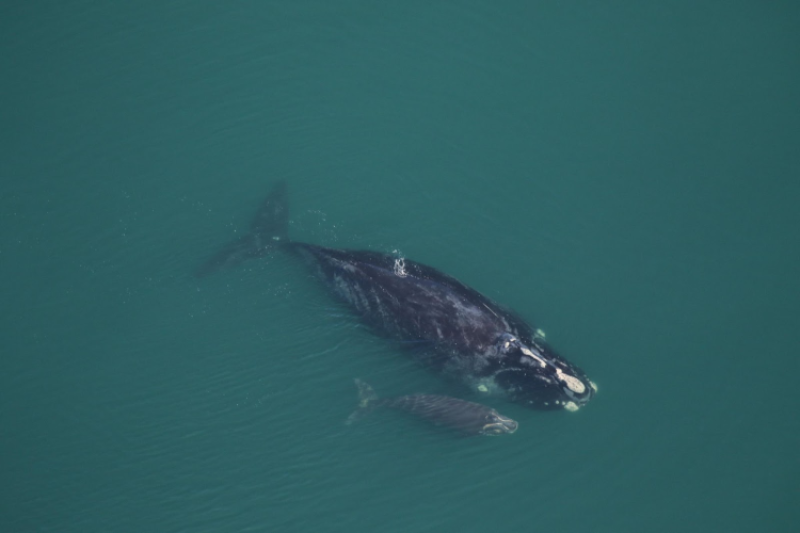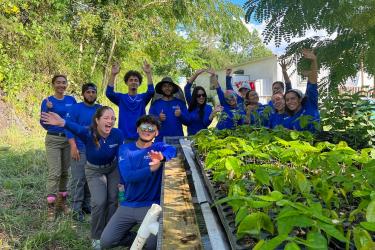In December 2022 and early January 2023, scientists deployed eight passive acoustic moorings along the southeast U.S. Atlantic coast to learn about marine mammals and their underwater environment. These moorings were specifically deployed to monitor for the presence of North Atlantic right whales when they visit their southeast U.S. calving grounds during the winter calving season. Specialized oceanographic instruments, called SoundTraps™, are autonomous acoustic recorders that are attached to the moorings. They record sounds from the ocean, including whale calls, fish calls, and shipping traffic. They can be deployed to record ocean soundscapes for up to 6 months at a time, and then are recovered to collect and analyze the recordings.
The moorings will remain in the water recording the ocean soundscape until next month, when they will be recovered. Our scientists will then analyze the recordings to detect North Atlantic right whale calls and other sounds. This will provide information on the day-to-day presence of calling North Atlantic right whales near each of the mooring sites. This information helps us understand how they use this habitat throughout the calving and migration seasons.
The Passive Acoustic Ecology Program at the center's Marine Mammal and Turtle Division uses advanced technologies to learn more about marine mammals. Passive acoustic monitoring techniques rely on specialized underwater sensing and recording equipment. These techniques allow our team to record and listen to the sounds produced by marine life within their habitat in a non-invasive way. As technologies advance, these acoustic recorders become smaller, more affordable, and can be left out in the field for longer periods of time. Passive acoustic monitoring methods pair well with other methods, such as photo identification, tagging, and aerial surveys. Together, they give scientists comprehensive data about individual whales, their health, and their ecology that can be used to protect this species.
Deploying six acoustic moorings in coastal waters off Georgia, South Carolina, and North Carolina during a short good weather window was a large task for even these ambitious field scientists. “It was a whirlwind trip. We slept in four states in four days, but we got it done!” said Jesse Wicker, based in Florida, a research associate for the Marine Mammal and Turtle Division. The trip entailed quite a bit of travel, launching a vessel, preparing the moorings, and deploying them at multiple sites. The last two moorings were deployed off of Florida early this year.
Melissa Soldevilla, the project lead and senior scientist for the Passive Acoustics Ecology Program, explained, “North Atlantic right whales are endangered, so it’s important that we protect every mom and calf. By listening for their calls throughout the calving season, we can better understand how they use this habitat and what areas are important to protect to reduce negative impacts from human activities.”
This passive acoustic research on North Atlantic right whales is complementary to the research conducted by collaborators at the Northeast Fisheries Science Center. There, researchers deploy passive acoustic moorings to listen for North Atlantic right whales on their northeast U.S. foraging grounds. The combined passive acoustic network also provides important information on the migratory corridor between the feeding and calving grounds.




